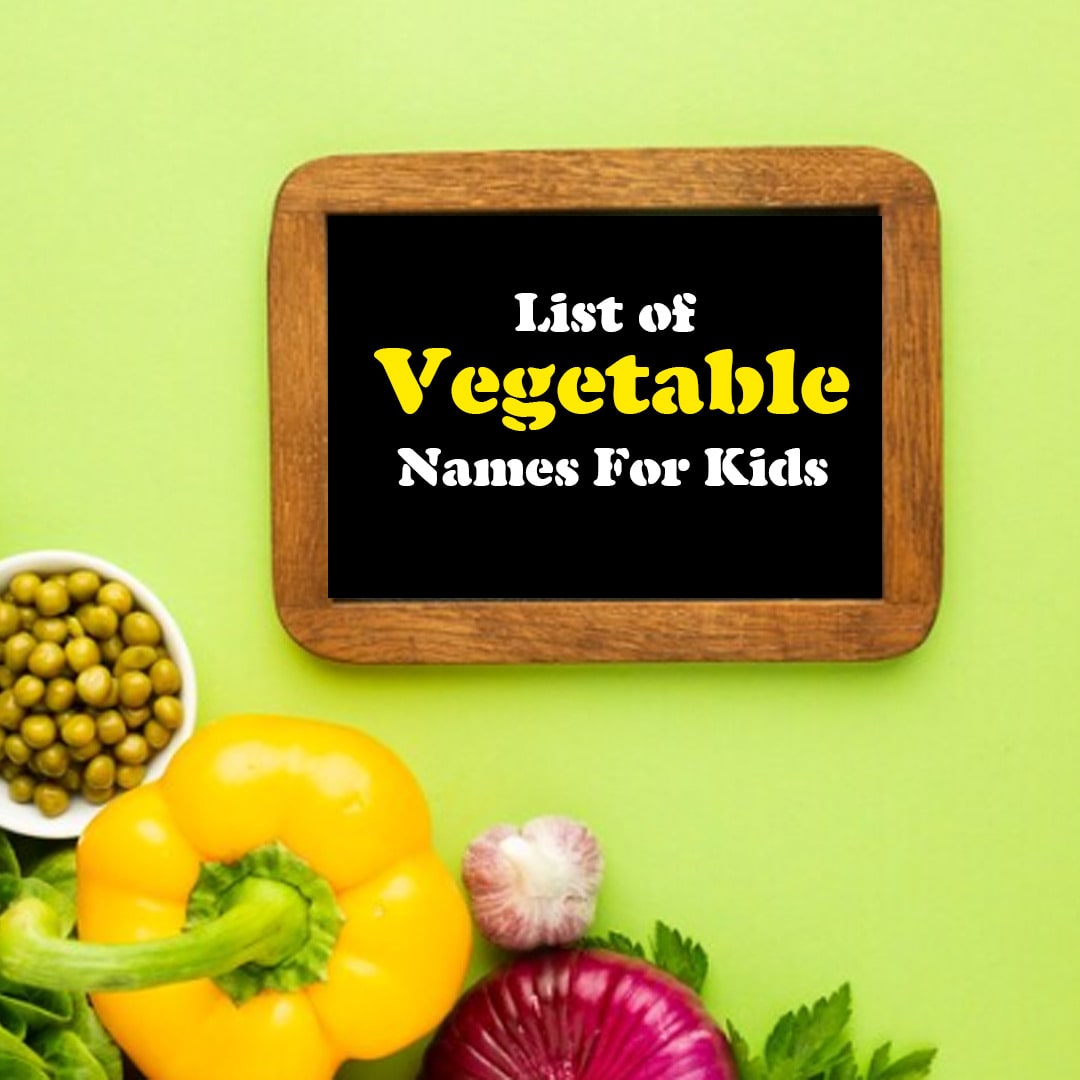

Please enter the code we just sent to whatsapp 91-11-46710500 to proceed
Didn't Receive OTP?

Eating vegetables is very important for kids, but nowadays kids hardly eat any vegetables. They only like fast foods and junk foods, which look attractive but are not at all good for their health. Children experience most of their brain development when they are small and eating healthy fruits and vegetables helps them in their overall growth and development. This is because vegetables have loads of vitamins, minerals, dietary fibre and antioxidants, that can keep them healthy. There are a variety of vegetables, but out of them, green vegetables and seasonal vegetables are the most important ones. Below is a list of vegetables for kids to learn the names of.
Carrots are orange-coloured vegetables. They are crunchy and can be eaten raw in salads or in cooked form like soups, cakes and fries. Carrots are rich in beta-carotene and vitamin A, which helps keep the eyes healthy.
Tomatoes are juicy vegetables that are available in red and green colours. They can be eaten raw in salads and sandwiches, or made into sauces for pizzas, pasta, etc. Tomatoes are rich in vitamins C and K and antioxidants like lycopene, which helps in heart health.
Potatoes are starchy, yellow vegetables, that are very versatile. They can be cooked in various forms like fried, baked, mashed, boiled, grilled and roasted. Potatoes are rich in carbohydrates, potassium, vitamin C and B6 and provide energy.
Cucumbers are crispy, green vegetables that can be eaten raw in salads and sandwiches. They have high water content, which helps us to stay hydrated during hot summers. They are also low in calories which helps to lose weight. Cucumbers are also rich in vitamins K and C.
Peas are round, green vegetables that are small in size. They can be eaten fresh or cooked. They are seasonal vegetables that are mainly available in the winter season. They are rich in vitamins C and K and minerals like iron and manganese.
Corn is also known as maize. It is a crunchy, yellow vegetable that is sweet. It is a versatile vegetable and can be eaten fresh or in boiled, grilled and roasted form. It is rich in dietary fibre, vitamins and minerals and should be included in a kids’ diet.
Bell peppers are sweet, crunchy vegetables that are available in various colours like red, yellow, green, orange and purple. They can be eaten in cooked and raw form. They are rich in vitamins C and A and antioxidants and promote overall health.
Broccoli is a green vegetable that has the shape of a tree. It is a nutritious vegetable and has many health benefits. It is rich in fibre, antioxidants, vitamins C and K and minerals like folate and potassium.
Cauliflower belongs to the same family as broccoli. It is available in various colours like white, purple and green, but the white one is the most common. Cauliflower is rich in vitamins C and K, fibre, folate and other antioxidants.
Spinach is a leafy green vegetable and is highly nutritious. It can be used in salads, sandwiches, smoothies and dips. It is rich in minerals like iron, folate and calcium and vitamins like A, C and K.
Lettuce is a leafy, green vegetable. It is used in salads, sandwiches, wraps, burgers and tacos. It is low in calories and high in water content. It has vitamins A, K and folate and minerals like potassium and manganese.
Green beans are long, slender and green vegetables. They are crunchy and can be eaten in boiled, sauteed, steamed and roasted form. They can also be used in a variety of dishes. They are rich in vitamins C and K, dietary fibre, folate, and minerals like manganese.
Zucchini is a green vegetable that looks like a cucumber. It is a seasonal vegetable that grows in summer. It is a versatile vegetable that can be salads, dips, toppings and other dishes. It is rich in vitamins C, A, folate and minerals like potassium.
Pumpkin is a sweet orange vegetable. It is a seasonal vegetable mainly available during the autumn season. It can be used in various dishes like pies, sauces, soups, cakes and others. It is rich in vitamins A, C and E and dietary fibre, antioxidants and minerals like potassium.
Sweet potatoes are sweet, orange, root vegetables. Because of their sweet taste, they can be used in many desserts like pies, cakes and muffins. They are rich in vitamins A, C and B6, dietary fibre and minerals like potassium.
Radishes are root vegetables that are available in a variety of colours like red, white, purple and black. They can be used in salads, sandwiches, tacos and appetizers. They are low in calories and rich in vitamins C, potassium and calcium.
Celery is a crunchy, fibrous, leafy green vegetable. It is versatile and can be used in dips, salads, sandwiches and many other dishes. It is a nutritious vegetable, low in calories and rich in vitamins K, C, potassium and dietary fibre.
Onions are purple and white vegetables that have a pungent smell. They can be used both raw and in cooked form. They are an essential ingredient in most of the cooked dishes. Onions are rich in vitamins C and B6, as well as dietary fibre, folate, and antioxidants.
Garlics are bulbous white vegetables that are known for their pungent smell. They are used in sauces, dips, oils and many cooked dishes to enhance their taste. They are rich in vitamins C, and B6, manganese and antioxidants like allicin.
Asparagus is a green vegetable with long stems. It is a seasonal vegetable available during the spring. It is used as a side dish and also added to salads, pasta and appetizers. Asparagus is rich in vitamins A, C, E, and K, as well as folate, fibre, and antioxidants.
These are the list of 20 vegetables that kids should add to their diet for their overall development.
Shape Your Kid's Future with Bambinos Classes | Bambinos.live India's No. 1 English Communication Platform For Kids | Click here to Book a Free Class Limited time offer.